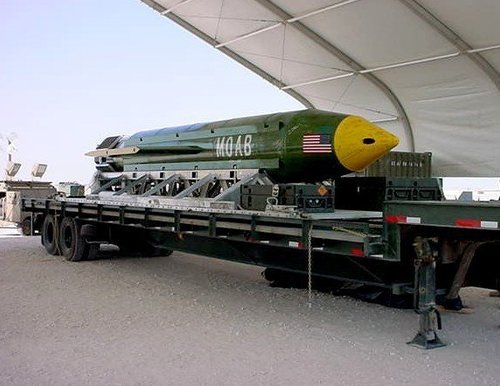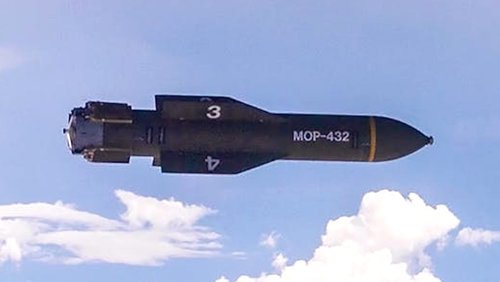- Joined
- 11 February 2010
- Messages
- 1,648
- Reaction score
- 2,697
I guess it's gonna put some hefty premium for highspeed directional datalinking.
As opposed to the current hefty premium for highspeed directional datalinking?I guess it's gonna put some hefty premium for highspeed directional datalinking.
As opposed to the current hefty premium for highspeed directional datalinking?
As opposed to the current hefty premium for highspeed directional datalinking?
Your point being ?
I might need to elaborate. What i mean with that is the Raider will have to carry its own phased array datalink antenna or relegate the job to its Attack radar. If it wish to control the drones 360, means there has to be multiple antenna. Each with its own boxes and they need cooling too. The longer it desires to control the drone (also with requirement for it to be high bandwidth which means high frequency or big antenna or both with power) This puts premium on space.
Yeah..that's IFDL or MADL or Super MADL (see the recent contract) or MIDAS.
Absolutely *nothing* of what you claimed above is true wrt to size, weight, power and cooling.
Yeah..that's IFDL or MADL or Super MADL (see the recent contract) or MIDAS.
Absolutely *nothing* of what you claimed above is true wrt to size, weight, power and cooling.
Yeah, that was my bad. claiming hefty was my undoing. Apologize.

"B-21s With Air-To-Air Capabilities," Drones, Not 6th Gen Fighters To Dominate Future Air Combat
The Air Force's vision of the future of aerial combat has evolved greatly as of late and has moved away from plans for new, costly manned fighters.www.thedrive.com
B-21 And Fighters Prepare For Disruptive Software-led Change | Aviation Week Network
U.S. Air Force thinks a software development shift will drive combat aircraft advances and change the defense industry business model.aviationweek.com
A recipe for yet more disaster?
What do you view as problematic?
Open Source software / architecture has been more than a bit of a disappointment, not to mention that it is a security nightmare at the best of times. And these are far from the best of times.
Oh really? 2.5 billion Android phones would like a word with you. More than half the web servers on the planet would also like a word with you. A bazillion Linux users would like a word with you... Shall I go on?
No operating system is automatically secure, although OpenBSD users might argue it comes close. There is no reason why open source software should be any less secure than proprietary software - on the one hand you get 'many eyes watching' (open source) on the other hand you get 'security by obscurity' (proprietary software). The risk of 'security by obscurity' is that bugs found by malevolent parties stay obscure too, which means proprietary software's bugs can be exploited for longer periods. Which, frankly, scares the willies out of me.Oh really? 2.5 billion Android phones would like a word with you. More than half the web servers on the planet would also like a word with you. A bazillion Linux users would like a word with you... Shall I go on?
Been a long time since Linux was considered to be automatically secure. Not to mention that recent distributions & developments have been mostly disappointing. Android was never secure, nor particularly robust for that matter.
Android has gone the SELinux route and I think on DoD applications, Android is going to be a hypervisor'ed OS soOh really? 2.5 billion Android phones would like a word with you. More than half the web servers on the planet would also like a word with you. A bazillion Linux users would like a word with you... Shall I go on?
Been a long time since Linux was considered to be automatically secure. Not to mention that recent distributions & developments have been mostly disappointing. Android was never secure, nor particularly robust for that matter.
There's nothing in the article about open source OS or software beyond containers. They are mainly talking about the government owningB-21 systems adopting open source OS and/or software?
But. Agile development can be a blessing, a curse or anything in between. With the government involved? Hmmm.
There seems to be a wider move inside the USAF to own their designs and software and not be reliant on single venders for open ended maintenance contracts. I'm not sure that is an achievable goal, but I can't blame them for trying. Procurement as it stands is horrible mess.
Best case, yes. FUBAR if you get it wrong.Agile development can be a blessing, a curse or anything in between. With the government involved? Hmmm.
If you are striving to get early feedback from the operational community I'm not sure there's a better way.
Best case, yes. FUBAR if you get it wrong.Agile development can be a blessing, a curse or anything in between. With the government involved? Hmmm.
If you are striving to get early feedback from the operational community I'm not sure there's a better way.
Any military aircraft is pretty much useless without functioning mission systems. Still, not quite as bad as having it fall from the sky because of failing avionics.
vs.Mess up agile, and you simply do not get the return on investments you would like. We are straying off-topic.
FUBAR if you get it wrong.
| B-2 | B-21 | ||
| We (lbs): | 158000 | 61817 | |
| Wg (lbs): | 376000 | 148155 | |
| Wf(lbs): | 167000 | 65338 | |
| Wcrew (lbs): | 1000 | 1000 | |
| Wpayload (lbs): | 50000 | 20000 | |
| Engine Thrust (lbs/each): | 17000 | 13397 | |
| No. of Engines: | 4 | 2 | |
| Wingspan, b (ft.): | 172 | 108 | |
| Wing Area, S (sq. ft.) | 5140 | 2011 | |
| Wetted Area Ratio: | 2.4 | 2.4 | |
| Wetted Aspect Ratio: | 2.4 | 2.4 | |
| L/D (max): | 22 | 22 | |
| Wing Area Scale Factor: | 0.39 | ||
| (used to scale fuel load) | |||
| Total Thrust (lbs): | 68000 | 26794 | |
| T/W Ratio (Take-off): | 0.18 | 0.18 | |
| Wing Loading (Take-off): | 73.15 | 73.67 | |
| Fuel Fraction: | 0.44 | 0.44 | |
| Payload Fraction: | 0.13 | 0.13 | |
| Aspect Ratio: | 5.76 | 5.80 | |
| Loiter L/D: | 22 | 22 | |
| Cruise L/D: | 19.1 | 19.1 | |
| Cruise Speed (mph): | 560 | 560 | |
| Max. Speed (mph): | 630 | 630 | |
| Powerplant: | F118-GE-100 | P&W PW800 | |
| Max Thrust (lbs): | 19000 | 18000 | |
| sfc (lbf/(lbs*hr): | 0.67 | 0.603 | |
| W1(lbs): | 141621 | ||
| W2 (lbs): | 89351 | ||
| Range (SM): | 6900 | 8149 | |
| Range (NM): | 6000 | 7082 |
B-2 carries 2xMOP in overload, thats 60,000 lbs50,000 lbs. overload for the B-2
Mr. Wittman said the B21 will have a variant of F135 engine(no reheat)I determined the engine the B-2 would use would most likely be a version of the passport engine, the same one P&W is proposing to re-engine the B-52.
B-2 carries 2xMOP in overload, thats 60,000 lbs50,000 lbs. overload for the B-2
B21 shall carry 1 MOP, so 30k lbs.
Mr. Wittman said the B21 will have a variant of F135 engine(no reheat)I determined the engine the B-2 would use would most likely be a version of the passport engine, the same one P&W is proposing to re-engine the B-52.
HASC member. He stated back in 2018 that B21 would feature modified F135 engines.Who is Mr. Wittman?

Wingspan at 108 ft is too small.Wingspan, b (ft.):172 108
Wingspan at 108 ft is too small.Wingspan, b (ft.):172 108
If payload fraction is assumed to be the identical(due to largely similar shape) and total payload is reduced to 50% of B2, then every dimension of the jet will reduce about 20% (1/2^0.33, since mass∝volume and volume∝dimension³)
As such the wingspan should be about 130-140ft.
In terms of payload carriage, I think it'll feature a single bay the same size as the two on B-2 to make use of existing configurations (using the AF rotary launcher and so on).
Where are your altitude figures? Does the B-21 not have a ceiling significantly higher that B-2? Remember that flutter from much longer wings was part of the risk reduction program. It think that changes your proposed dimensions significantly.My analysis of the B-21 is based off of the first two images shown below; the third is what I generated...... (snip)
Which works out well, as another Aero Engineer who attended school with me and reviewed my work said he figured it should be able to carry one MOAB which weighs around 21,000 lbs.


Dude. Your 20,000 pound payload is not even 8 agm86.My analysis of the B-21 is based off of the first two images shown below; the third is what I generated.
Too much thrust????? Yeah ok, considering that we can safely assume the 21 will need EXCESS thrust for flight control as deflecting surfaces increases RCS. I guess we may as well build a half scale b2 and call it a night.Wingspan at 108 ft is too small.Wingspan, b (ft.):172 108
If payload fraction is assumed to be the identical(due to largely similar shape) and total payload is reduced to 50% of B2, then every dimension of the jet will reduce about 20% (1/2^0.33, since mass∝volume and volume∝dimension³)
As such the wingspan should be about 130-140ft.
In terms of payload carriage, I think it'll feature a single bay the same size as the two on B-2 to make use of existing configurations (using the AF rotary launcher and so on).
OK, I read the article at the drive. The congressman didn't speculate about the engines, the Drive did. Two F-135s would generate too much thrust which would cut into range. I also assumed the design I have shown above would have the same size weapons bay as the B-2, hence half the load. Also, given that it has longer range than the standard B-2, I assume it wouldn't carry as much fuel to carry the MOP, so I'll stick with my original analysis.
Which works out well, as another Aero Engineer who attended school with me and reviewed my work said he figured it should be able to carry one MOAB which weighs around 21,000 lbs.
MOAB is shoved out the back of a C-130, and is not carried by any bomber. MOP (GBU-57), which is carried by the B-52 and B-2, weighs 30,000lbs.
MOAB
View attachment 642335
MOP (GBU-57)
View attachment 642336
Where are your altitude figures? Does the B-21 not have a ceiling significantly higher that B-2? Remember that flutter from much longer wings was part of the risk reduction program. It think that changes your proposed dimensions significantly.My analysis of the B-21 is based off of the first two images shown below; the third is what I generated...... (snip)
